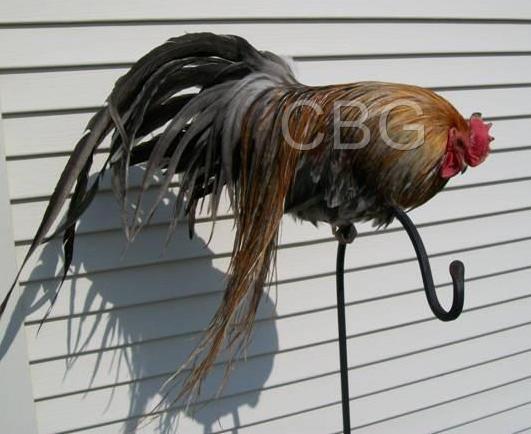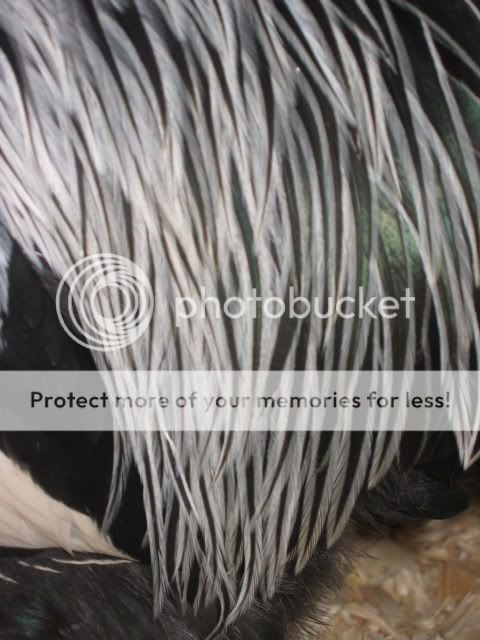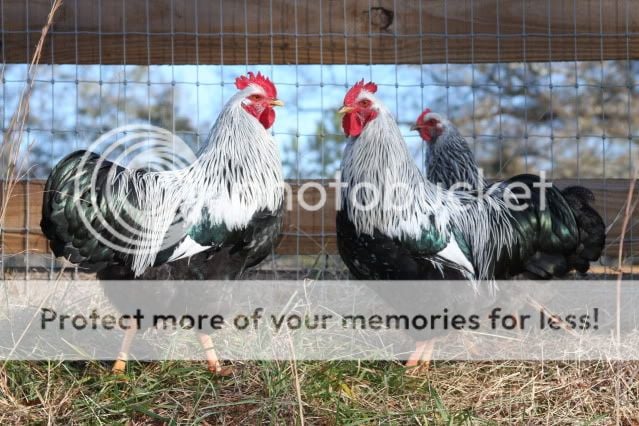Just some other info for the curious or interested. As far as questions about crossing for color variations longer feathers, longer tails or that sort of stuff. If your interest is as yard ornaments or trying to introduce some of the traits of these birds to your lines. anything is possible. But when it comes to breeding for fly tying purposes it is a bit of a broad street on that question. First of all realize that most flies are made according to a pattern or Recipe. And that recipe is formulated from a living insect and a persons attempt to imitate it. The Hackle produces is attempting to fill the need for those specific colors and looks. Colors matter and will very from location to location. For example a Blue Dunn colored feather that works well for Yellowstone National Park will not be the correct shade of blue for the Snake River in California. This is true for every type of feather produced whether they be Grizzly, Ginger, Dunn, or any other natural color. So having a flock that produces a consistent pattern but a variety of color tone within limits is a good thing. but you do not want completely different colors. Ultimately you would want an overall flock that produces top grade necks across the spectrum of color tones so that everyone can look at your collection and find something they are happy with.To hit that high dollar mark for necks would require not only producing a top quality neck of feathers. Which in itself has a long list of requirements. But that you produce it in the right color range for the person that is serious enough about the quality of their flies to pay that $150 for a neck. A top quality Grey Jungle Fowl neck, Known to fly tyers as a Jungle Cock Eye. can sell for as much as $400. But to give you an example of what ti takes to sell such a neck. First you need at least a dozen of your finest examples. you would send all those to your customer and they would be able to pick the one they want from them and return the 5 they do not want along with payment for the one they keep. a lot of work and risk that in truth validates the amount of money you stand to make. I intend to start my hackle breeding program with the grey jungle fowl mainly because I already have a market for the feather even if they are low quality.
as for hens and all those lesser quality feathers. there are uses for them as well. Dry Fly Hackle feathers seem to be the hardest to come buy I suppose because the requirements for them are harder to produce. for Hackles that do no live up to the needs of Dry Flies, they are then considered for wet flies or streamers. but there are many many uses of feathers but many are more common and worth probably less than it costs to produce them. I know you can buy dyed hen saddles for just a few dollars. The breeder of Hackle Chickens is really stuck in the middle between a customer that is looking for an exact color of paint for example, and the limitations of what his sources can provide. Producing hackles is not easy, will require the production of hundreds of "Waste" or lower quality feathers in order to get that occasional diamond in the rough. when you see it you need to be able to recognize it though and that is pay day.
Hope some of that helps give you a since of the bigger picture of why Hackle feathers would be such a big deal.
as for hens and all those lesser quality feathers. there are uses for them as well. Dry Fly Hackle feathers seem to be the hardest to come buy I suppose because the requirements for them are harder to produce. for Hackles that do no live up to the needs of Dry Flies, they are then considered for wet flies or streamers. but there are many many uses of feathers but many are more common and worth probably less than it costs to produce them. I know you can buy dyed hen saddles for just a few dollars. The breeder of Hackle Chickens is really stuck in the middle between a customer that is looking for an exact color of paint for example, and the limitations of what his sources can provide. Producing hackles is not easy, will require the production of hundreds of "Waste" or lower quality feathers in order to get that occasional diamond in the rough. when you see it you need to be able to recognize it though and that is pay day.
Hope some of that helps give you a since of the bigger picture of why Hackle feathers would be such a big deal.






